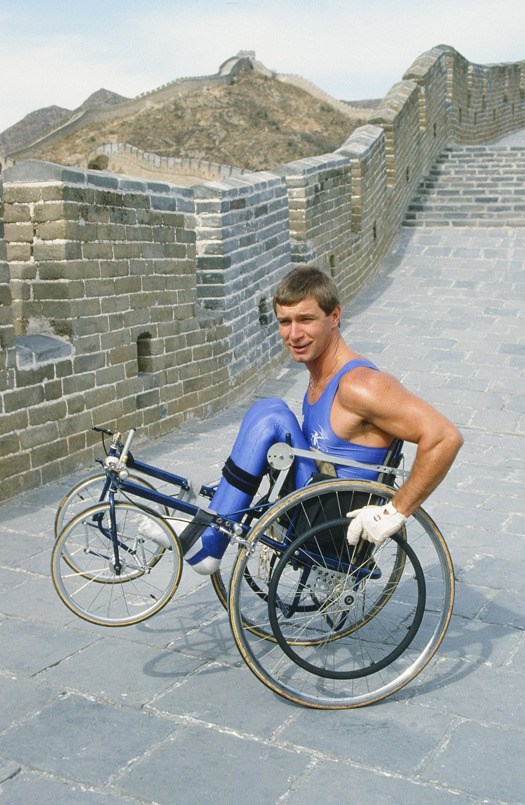Its 1986. Michael French is the producer of BCTVs Vancouver Show and hes just been told that a million people lined the streets of Beijing to cheer on Rick Hansen during his Man in Motion tour.
French senses that something big is happening so he calls a few friends, calls in a few favours, and quickly cobbles together a documentary team that flies to China a few days later.
You know how sometimes you think you know something about a person, French says in a telephone interview, and all of a sudden you meet them and its a whole different experience than you imagined? When I met Rick [in China], he was on the road. He was wheeling. He was not happy. He was tired, the wind was blowing, he was beaten up.
I realized that whether there was one person on the street [cheering him on] or one thousand, his job was still the same I just gotta get through this day. I was astounded to find him living entirely in the moment, focused only on getting through the next mile.
I think he was holding on minute by minute sometimes.
Thats the thing about meeting a live-and-in-the-flesh super hero. Because they are doing the extraordinary like wheeling themselves around the world you simply assume they were born with some special power, some prenatural ability to do things no other human can do. Maybe its a way to justify why youre not trying to squeeze too many heroic acts into your day. Its easier to stop questioning whether they have the same weaknesses as most mere mortals.
And then you find out, as French did, that this particular super hero was simply a young, very determined man in agony as he pushed his body to do the equivalent of a marathon every two days.
This is the Rick Hansen you meet in Frenchs 2010 movie, Heart of a Dragon, which has just been released as a DVD. Hansen isnt seeing his quest to circumnavigate the globe in his wheelchair as some sort of mystical vision quest. He doesnt get involved in deep, philosophical pontifications about the meaning of life. Instead, Hansen is focused almost exclusively on how hes going to find the strength to get himself up the long, snaking spine of the Great Wall of China. Such single-mindedness sometimes blinds him to the people around him people like Don Alder, who was in the truck with him when a teenaged Hansen lost the use of his legs, physiotherapist Amanda Reid, who would later become his wife, and his cousin Robin Gibson.
Rather than go the Forrest Gump route superimposing an actors image into real-life scenes French does, quite literally, what only he can do. He takes his documentary footage of Hansen in China in 1986 and weaves it into the story. He doesnt use only the shots that could trick the audience into believing that its actor Victor Webster in the chair. Instead, film and documentary are woven together, giving the audience credit for knowing that theres a difference.
This is not the movie Hollywood would have made. Based on a true story would have meant that apart of acknowledging that someone did indeed circumnavigate the globe in a wheelchair, the paths of truth and fiction would rarely converge.
We decided, lets tell the story we understood, French says of the decision to concentrate on those few days in China. In the end, our sole objective was that if you see someone struggling, you will take a different look at them. Rick wanted people to see disability in a way that had never been done before.
Rick is clearly an athlete. He was hugely inspired by Terry Fox. Then, as he was going around the world, he was hugely inspired by his wife Amanda [who joined the Man in Motion tour as his physiotherapist.] He found people who were in the place he wanted to go. He finds people he respects and learns from them. The Rick Hansen you see now is someone who incorporated the best qualities of those people.



